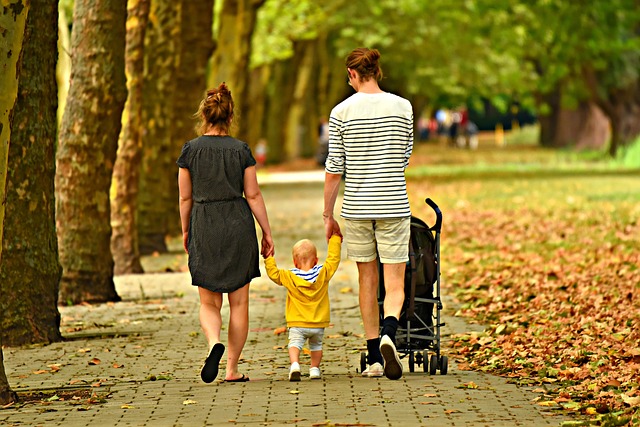In this guide, we list some potential sustainability tips for families.
We take into consideration how both parents, and also children can approach sustainability in a practical and simple way.
We’ve also adapted some general sustainability tips to take into consideration factors relevant to families.
1. Consider Getting The Whole Family Participating In At Least Some Simple Way
Getting every member of the family involved in doing something to live more sustainably doesn’t need to be difficult.
It can be as simple as doing one thing, such as minimizing or reducing food waste or packaging waste in some way.
2. Buying Some Items To Last, Or, Use Pre-Used Items Where Possible
These things are not always possible or practical.
But, the idea of buying items to last, or using pre-used items (that are in good condition), is to get more value out of each item, and/or to reduce excessive consumption of new resources.
A few examples where this might be possible might be:
– Buying a quality bed – good bed frames and mattresses can last years, as opposed other more highly disposable or shorter lifespan products
– Buying a secondhand family car
– Buying thrift shop clothing in good condition for very young children (and babies) that might not know the difference, or accepting hand me down clothing that is in good condition from siblings or relatives
– Buying a secondhand instrument for a child until they improve enough to warrant a new one
3. Sell, Donate Or Gift Children’s Items Where Possible
Some children’s items may still be in a good enough condition for others to use.
Consider selling, donating or gifting them instead of throwing them out where possible.
For example, when a child has outgrown their bed, the bed frame might be able to be sold to another family.
The same goes for some baby supplies and products.
4. Minimize Food Waste
Food waste has several sustainability consequences
There might be some simple things families can do to reduce food waste, such as:
– Being intentional with weekly food shopping, and only buying what is needed
– Making sure children are eating what they are give. The type of food, and the amount of food matter
– When food isn’t eaten, make a habit of storing it properly as leftovers, and eating it later, instead of throwing it out
5. Minimize Packaging Waste
Packaging waste mainly includes single use and highly disposable plastic wrapper type waste
A few ways to minimize packaging waste might be:
– Buying food items, house supply items, and other items in bulk, or in larger quantities where possible, or simply buying products that minimize individual and unnecessary packaging/wrapping
– Use reusable and washable items like drink bottles, and food containers where possible, and use them enough times to justify the sustainability footprint compared to single use items
6. Dispose Of Waste Responsibly At Home
This might involve making sure that waste is disposed of and sorted into the correct waste stream bins for waste management pickup (i.e. general waste bins, recycling bins, and organic waste bins if you have them)
But, it may also involve considering whether a home compost, or use of organic scraps for other uses, may be practical and beneficial
7. Consider Where Sustainable Or Eco Friendly Products Might Be Suitable
Almost every type of product has sustainable or eco friendly branded options available now.
Some baby products, and young child to teenager products, may each have beneficial and practical sustainable product ranges available.
One example might be some types of sustainable or eco friendly nappies.
8. Consider General Sustainability In The Family Home
There might be several ways to live more sustainably at home, or make the family home more sustainable
We previously put together a separate guide outlining sustainability tips in the home that you can get some ideas from
9. Consider How Transport Impacts Sustainability
Transport is usually critical to families, as children have to get to school, sports, and other activities and places.
Different modes of transport have different sustainability footprints.
The good new is that some children are likely already reasonably sustainable if they either ride or catch public transport to school or college/university.
Parents might also be more sustainable by riding or catching when going to work.
Driving the family car/s might be less sustainable on a per passenger basis, but, it might help if the car is more fuel efficient.
10. Consider Sustainable Forms Of Family Outings & Recreation
Family outings that involve more nature and less consumption might be good every now and then from a sustainability perspective.
These types of activities might involve things such as:
– Walks
– Bike rides
– Hikes
– Swimming, or going to the beach
– Kayaking
11. Consider Sustainability For Children Who Are Students
We put together a separate guide listing some potential sustainability tips for students.
Some tips may apply to children who are going to school or college/university.
12. Consider Sustainability For Parents Who Are Employed
Stay at home parents and full time parents might look at some of the tips in this guide, and particularly the linked guide about sustainability at home, as they might spend more time around the family or the family home.
If one or both parent are working as an employee though, they might consider this separate guide that outlines potential sustainability tips for employees.
Sources
1. Various ‘Better Meets Reality’ guides
','' ); } ?>
